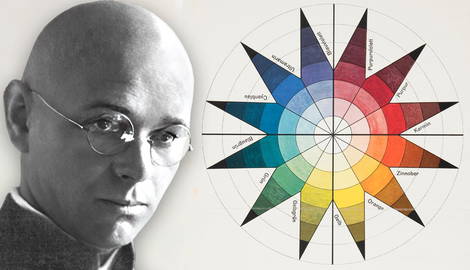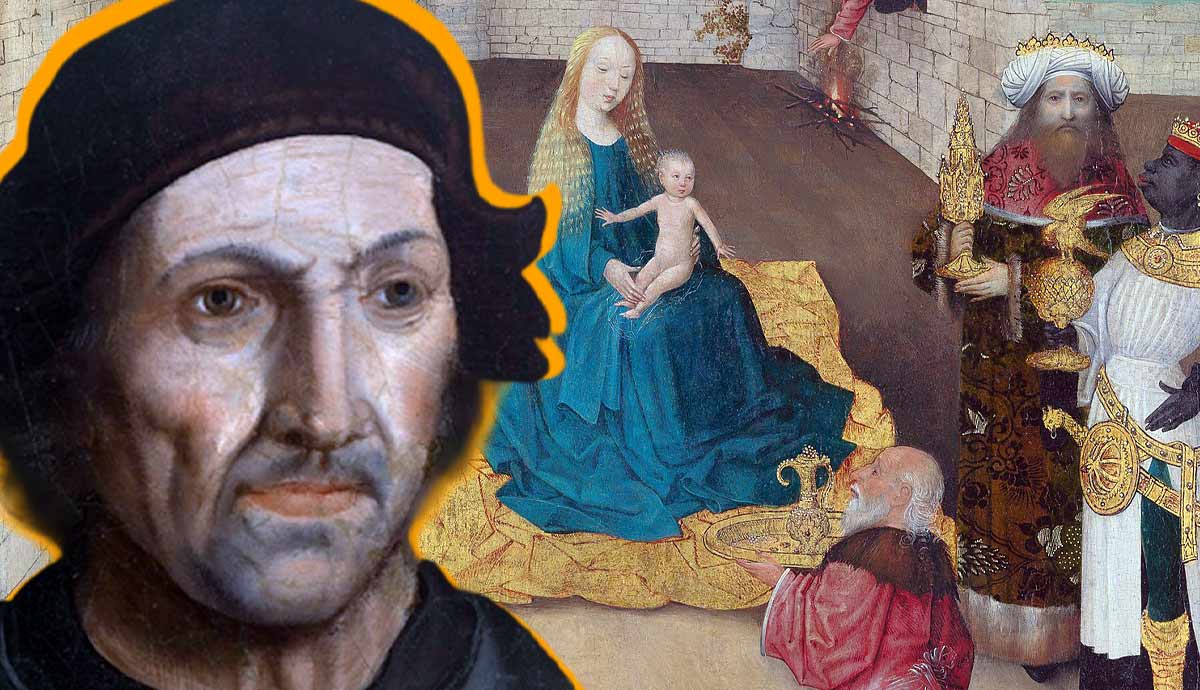
The Bauhaus School of Design had no shortage of outstanding and remarkable teachers during its short time. Among them was the Swiss-born designer Johannes Itten who developed the basis for the Bauhaus education, running an all-encompassing introductory course for new students. Apart from teaching, he developed color theories, ran workshops, and expressed interest in a bizarre religious cult. Read on to learn more about Johannes Itten and his controversial persona.
1. Johannes Itten Was an Elementary School Teacher First

Not much is known about Johannes Itten’s early life, except that he was born and raised in Switzerland. Upon finishing school, he chose to become an elementary school teacher. As a small village school teacher, Itten repeatedly got in trouble for refusing to mark errors on his students’ essays, fearing that might discourage them from trying harder. Instead, he preferred to discuss the mistakes they made in a full classroom as parts of new study material.
According to Itten, such an approach established an atmosphere of creative freedom and curiosity, with children trusting their mentor, and unafraid to develop their own voices. By then, Itten already demonstrated an interest in fine arts, but he was discouraged from studying it due to the same rigid and outdated methods used in most art institutions. However, this all changed once he moved to Germany to study under the guidance of Adolf Hölzel.
2. His Teacher Was The Now-Forgotten Pioneer of Abstract Art

Adolf Hölzel was known for his progressive teaching methods that infuriated the conservatives, and his own theoretical explorations of color theory. Despite being relatively unknown today, Hölzel was one of the earliest precursors of abstract art in Germany, who recognized the potential of pure form and color. Hölzel’s studio gathered a group of young artists who would soon become crucial in the formation of the Bauhaus. Apart from Johannes Itten, among Hölzels’ students were Latvian artist Ida Kerkovius, sculptor and choreographer Oscar Schlemmer, and other future German avant-garde creatives.
In these years, he understood the necessity of studying the works of the Old Masters to work with contemporary radical art. In his notebooks, he left detailed analyses of the paintings from the Renaissance era and beyond, dissected into the smallest visual elements, lines, and directions. Encouraged by Hölzel, Itten temporarily abandoned figurative art to focus on abstraction, form, and color. Yet, in the following years, he would take a step back while still retaining the bold color palette and experimental line.
3. He Was One of the First Bauhaus Teachers

After finishing his course with Hölzel, Johannes Itten moved to Vienna, where he met Walter Gropius. Gropius’ goal was to modernize design and architecture, tailoring it to the needs of modernity through arranging a new experimental art school in Weimar, Germany, that would gather the most progressive mentors of his time.
Itten was one of the first artists Gropius invited to work in Bauhaus, later including other students from Hölzel’s studio. Ida Kerkovious ran the weaving workshop, and Schlemmer took over the departments of mural painting and stagecraft. Itten was in charge of the introductory course, which allowed new students to try their hand at every workshop available. Unlike other mentors who specialized in particular techniques and topics (for instance, Wassily Kandinsky taught color theory), Itten covered all of them at once. His students explored contrast and texture by piling random objects and materials on top of each other, experiencing shape and form in the most direct ways.

Similarly to Itten’s methods at the elementary school, his approach to education still relied on a student’s intuition and the exciting process of discovery and learning. As a teacher, he was not there to punish anyone or dictate how things should be done but to experience artistic discovery with his protegees and lead them to new revelations. At the time of Itten’s own artistic education, the principal method of learning was to simply copy the style and the manner of one’s tutor, which rarely led to the development of new and distinctive visual ideas. Itten insisted on developing one’s creative personality by studying older ways and rules of art and adapting them to one’s needs. His teaching became the basis of the whole educational system of Bauhaus in its early years, but it also had a darker side.
4. He Was a Member of a Bizarre Cult

Bauhaus opened its doors in 1919 when many of its students returned from the frontlines of World War I. In his diaries, Itten noted that many of his students were damaged and traumatized. There was a persistent sense of horror that filled the space. To fight it, many resorted to spiritual exploration, which led to a new upsurge in unusual occult practices.
Johannes Itten was no exception as he searched for higher truth and harmony. During his studies in Germany, he became familiar with Mazdaznan, a Neo-Zoroastrian cult centered around self-discipline and purification of the spirit. Despite toying with centuries-old concepts and referencing ancient texts, Mazdaznan was a new invention made up by the German-American spiritualist Otto Hanisch, who took the name Otoman Zar-Adusht Ha’nish when spreading his doctrine. Mazdaznan relied on a vegetarian diet, gymnastics, breathing exercises, and wellness practices as principal methods of physical and spiritual cleansing. Its final goal, however, was much more disturbing and relied on the ideas of American racism. Spiritual and physical practices, according to Hanisch, were necessary to create a new superior race of the whitest people ever seen, thus getting rid of destructive influences of other ethnicities. Although Mazdaznan was never violent and aggressive (and, unlike other similar doctrines, never anti-Semitic), its intellectualization of white supremacy cannot be left unnoticed.
5. His Departure From The Bauhaus Was Not Easy

Itten remained in Bauhaus until 1923 when his disagreement with Gropius reached its peak. As the charismatic teacher of the introductory course, Itten exerted his influence on students from his first days at the school. Charismatic, enthusiastic, and weird enough, he mesmerized aspiring artists and used his charm to promote his occult ideas. Following his mentor, students shaved their heads and dressed in flowy robes. The weight of Itten’s opinion was so heavy he managed to alter the curriculum by adding gymnastics and breathing exercises into the Bauhaus study plan.
Moreover, Itten and his followers managed to occupy the school canteen, installing a Mazdaznan-approved plant-based menu with the overwhelming amounts of garlic and onion required for intestinal cleansing. Walter Gropius had enough of these experiments and tried to install order, yet he was outnumbered by Itten’s fans. The Weimar authorities were so concerned with groups of bald spiritually ecstatic young students in their city that they asked Gropius to intervene.
Apart from religious and gastronomical disagreements, Gropius and Itten could not agree on the future of their school. Gropius saw the potential in mass-produced functional design and encouraged his students to work on commissions in Bauhaus workshops, thus partially financing the institutions. Itten, on the contrary, did not welcome industrial production and called for individual creative freedom. Finally, after months filled with conflict, Itten left the school.
6. Color Theories of Johannes Itten Remain Influential

As World War II unfolded and avant-garde artists faced prosecution, Itten left Germany for his native Switzerland, which retained its neutral status. There, he moved from teaching to administrative tasks, appointed as the director of both a museum and an applied arts school in Zurich. Later, he would launch several workshops and colleges and would take part in establishing several Swiss museums. Until his death in 1967, he continued to publish theoretical work on color and form.
One of Itten’s inventions became so popular among aspiring artists and designers that it is most likely familiar to anyone. Itten’s color star (and its later version, the color wheel), a star-shaped diagram of complementary colors opposing each other was based on him drawing parallels between contrast and harmony in music and visual art. Another invention of Itten, surprisingly adopted by makeup and fashion companies, was his theory of seasons. According to Itten, there were four visual types of people, each corresponding to a particular season with their appearance and aesthetic preferences. While the artist used this theory to develop his students’ individual artistic styles, companies applied it to selling makeup and accessories.









